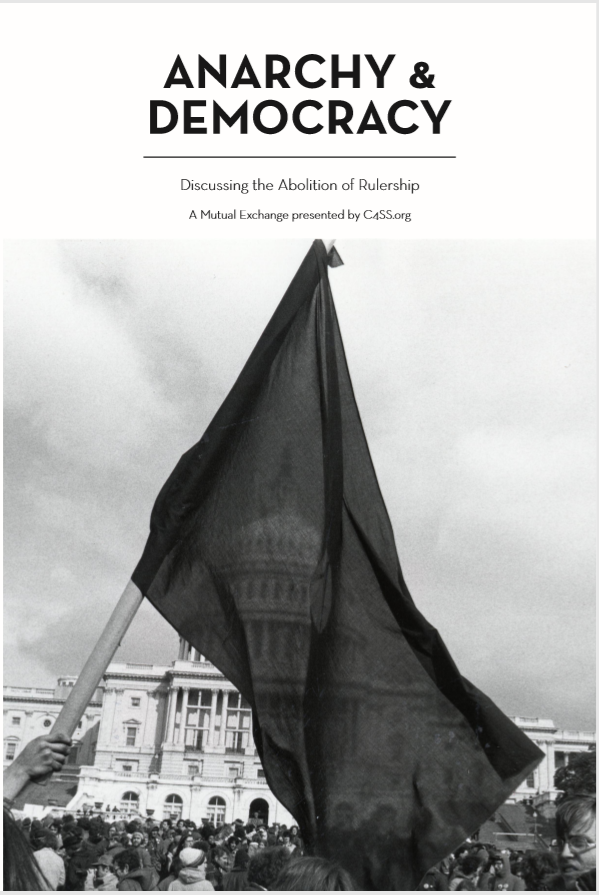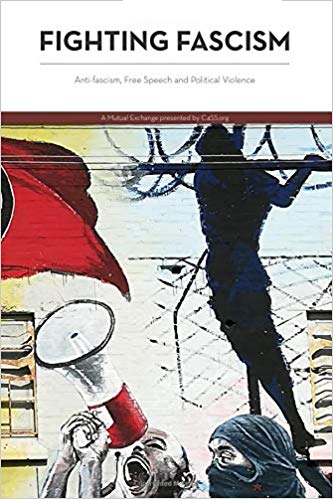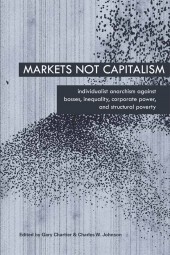The goal of this essay is three-fold. First, I will identify the key concepts which outline the philosophy of Agorism and the strategy of Counter-Economics, as outlined by Samuel E. Konkin III in The New Libertarian Manifesto and An Agorist Primer. Second, I will illustrate how radicals of all stripes can utilize the strategy of counter-economics, as described by Konkin, without necessarily endorsing his philosophy of Agorism and it’s specific tenets. Finally, I will describe what sets Agorism apart from Anarcho-Capitalism and other schools of thought. I will show that although the Counter-Economic strategy can be utilized by nearly any individual, Agorism itself is not simply a strain or subset of Anarcho-Capitalism, but a unique political philosophy of its own.
Before I dive in, allow me to briefly explain the inspiration for the title of this essay and the essay itself. As I will demonstrate, the Agorist message and Counter-Economic strategy can be of use to any individual who finds themselves in pursuit of a more free, just, and ethical world. However, the reason the title focuses on Anarcho-Capitalism is because I have noticed a trend in “right-libertarian”/AnCap social media circles where individuals claim to support the ideas of Konkin and his Agorism yet also express a distaste for left-libertarianism. My goal is to help readers with this viewpoint understand the essential role Konkin and his “New Libertarianism,” or Agorism, played in developing the American Left-Libertarian movement.
Agorism As Consistent Libertarianism
Let’s start by getting an understanding of Konkin’s vision. Konkin called for the creation of a revolutionary movement lead by workers and entrepreneurs voluntarily cooperating in economic exchanges that take place outside of the State’s grasp. He called this movement The New Libertarian Alliance. Konkin based his revolutionary ideas on a foundation of Libertarianism in the vein of Rothbard and the American Individualist Anarchists before him. In The New Libertarian Manifesto Konkin writes:
“Where the State divides and conquers its opposition, Libertarianism unites and liberates. Where the State beclouds, Libertarianism clarifies; where the State conceals, Libertarianism uncovers; where the State pardons, Libertarianism accuses.
Libertarianism elaborates an entire philosophy from one simple premise: initiatory violence or its threat (coercion) is wrong (immoral, evil, bad, supremely impractical, etc) and is forbidden; nothing else is.
Libertarianism, as developed to this point, discovered the problem and defined the solution: the State vs the Market. The Market is the sum of all voluntary human action. If one acts non-coercively, one is part of the Market. Thus did Economics become part of Libertarianism.”(1)
From this, Konkin developed his views on property:
“Libertarianism investigated the nature of man to explain his rights deriving from non-coercion. It immediately followed that man (woman, child, Martian, etc.) had an absolute right to this life and other property – and no other.
All theft is violence initiation, either the use of force to take property away involuntarily or to prevent receipt of goods or return of payment for those goods which were freely transferred by agreement.” (1)
Konkin became involved in the burgeoning libertarian movement in the late sixties. At this point the lovers of liberty were beginning to recognize the potential for a national movement of anti-statist, pro-market radicals. In the midst of this opportunity Konkin saw libertarian activists being lured into “get liberty quick” schemes, such as electoral politics. In a counter-attack to the enemies of liberty, Konkin outlined a new philosophy that he believed was simply the result of applying libertarian principles to their most consistent and logical ends.
“The basic principle which leads a libertarian from statism to his free society is the same which the founders of libertarianism used to discover the theory itself. That principle is consistency. Thus, the consistent application of the theory of libertarianism to every action the individual libertarian takes creates the libertarian society.
Many thinkers have expressed the need for consistency between means and ends and not all were libertarians. Ironically, many statists have claimed inconsistency between laudable ends and contemptible means; yet when their true ends of greater power and oppression were understood, their means are found to be quite consistent. It is part of the statist mystique to confuse the necessity of ends-means consistency; it is thus the most crucial activity of the libertarian theorist to expose inconsistencies. Many theorists have done so admirably; but we have attempted and most failed to describe the consistent means and ends combination of libertarianism.
New Libertarianism (agorism) cannot be discredited without Liberty or Reality (or both) being discredited, only an incorrect formulation.” (1)
Briefly, Agorism calls for the creation of a new society by competing with the State directly, rather than relying on voting, electoral politics, or calls for insurrectionary violence. Konkin coined the term Agorism after the Greek word agora for “open marketplace”. In order to achieve this agora, Konkin called for entrepreneurs to make use of the so-called “black and grey markets”. “In short, the ‘black market’ is anything non-violent prohibited by the State and carried on anyways,” Konkin wrote. “The ‘grey market’ is used here to mean dealing in goods and services not themselves illegal but obtained or distributed in ways legislated against by The State.” (2)
For Konkin, a truly libertarian society would be Agorist – “libertarian in theory and free-market in practice”. This society would include a respect for justly acquired property, voluntary cooperation between entrepreneurs and producers, and replacing all of the State’s “services” with private competition among individuals and collectives.
“Libertarian analysis shows us that the State is responsible for any damage to innocents it alleges the ‘selfish tax-evader’ has incurred; and the ‘services’ the State ‘provides’ us are illusory. But even so, there must be more than lonely resistance cleverly concealed or ‘dropping out?’ If a political party or revolutionary army is inappropriate and self-defeating for libertarian goals, what collective action works? The answer is agorism.” (3)
The goal of Agorism is to replace all non-consensual, coercive relationships with voluntary relationships based on mutual benefit via entrepreneurship in the black and grey markets. This shuffling of “large collections of humanity from statist society to the agora” was “true revolutionary activity”. According to Konkin, Agorists should not launch “attacks” on the State. “We are strictly defensive,” Konkin wrote in An Agorist Primer, his follow-up to The New Libertarian Manifesto.
Further, Konkin described an agorist as “one who lives counter-economically without guilt for his or her heroic, day-to-day actions, with the old libertarian morality of never violating another’s person or property”. The philosophy stresses the importance of taking action. “An agorist is one who lives agorism. Accept no counterfeits. There are agorists “trying to live up to it.” There are, of course, liars who will claim to be anything. As Yoda said so succinctly, ‘Do. Or do not. There is no try.’ That’s Agorism.” (4)
Counter-Economics As Defined by Konkin
If Agorism is Konkin’s premier philosophical contribution, his recognition of Counter-Economics as the path towards Agorism is equally important. The term Counter-Economics can be attributed to the time and period in which Konkin developed his ideas. “Counter-Culture was a popular phrase, the only lasting victory of the “hippies.” Counter-Economics implied that the “revolution wasn’t finished” and that the Economic System needed to undergo the same up-ending as the Culture had,” Konkin wrote.
As defined above, the black and grey markets are part of the Counter-Economy, which Konkin defined as “All (non-coercive) human action committed in defiance of the State”. In line with libertarian principles of non-aggression, Konkin labels initiatory violence in the form of theft or murder as the “red market”, the one type of activity that is shunned in his counter-economy.
Konkin explains that as the State’s repressive and oppressive activities increase, the people will begin seeking economic alternatives to State regulation and interference. This provides an opportunity for forward-thinking Agorists to launch and support counter-economic businesses and activity. Konkin believed that once the counter-economy had progressed to the point where entrepreneurs were providing the public with protection and security services that could rival or defend against the State, the Agorist revolution would be complete.
“Slowly but steadily we will move to the free society turning more counter-economists onto libertarianism and more libertarians onto counter-economics, finally integrating theory and practice. The counter-economy will grow and spread to the next step we saw in our trip backward, with an ever-larger agorist sub-society embedded in the statist society. Some agorists may even condense into discernible districts and ghettos and predominate in islands or space colonies. At this point, the question of protection and defense will become important.”(3)
“Eventually, of course, after a period of increasingly rapid change of this kind, the “underground” will break into and displace the “overground”; the state will wither away into irrelevance, its taxpayers, soldiers, and law-enforcement people having deserted it for the marketplace; and we’ll be left with a free, agorist society.” (4)
Counter-Economics As A Tool For All Radicals
Konkin envisioned a world of decentralized, peer to peer communities consciously and voluntarily doing business in the counter-economy as a means towards ending the State and liberating the people. The range of (and opportunity for) counter-economic activity has only increased with the expansion of the internet and decentralized technology like crypto-currencies. Konkin discussed various forms of counter-economic activity including, using cash to avoid detection, barter, investing in precious metals, undocumented employment, use of illicit and illegal drugs and medicines, prostitution, bootlegging, gambling, weapons dealing, or simply providing a service while accepting payment in non-statist currencies.
The possibilities are essentially endless and should be welcomed by all radicals who are seeking alternatives to Statism and the status-quo. Any individual or collective who recognizes the economic monopoly that is maintained by continued use of the Federal Reserve Note (dollar) should be supportive of counter-economic measures and investing in creating alternatives. Whether your idea of economic freedom is collective ownership or individualist in nature, Agorism offers an opportunity for communes, mutual banks, time stores, and marketplaces based in the counter-economy. This will allow all non-statist counter-economic ventures to cooperate and compete in the pursuit of a more free society. As Nick Ford has noted, there is opportunity for an Agorist-Syndicalist alliance, and in our first book, John Vibes and I propose the creation of an Agorist-Mutualist alliance. Quite simply, if you want to abolish the State and the privileged class who benefit from its existence, create alternatives to the current paradigm and outgrow the archaic institutions of yesterday.
I should note that Konkin was critical of communism. In “Counter-Economics: Our Means” he writes, “the anti-market commune defies the only enforceable law – the law of nature. The basic organizational structure of society (above the family) is not the commune (or tribe or extended tribe or State) but the agora. No matter how many wish communism to work and devote themselves to it, it will fail. They can hold back agorism indefinitely by great effort, but when they let go, the ‘flow’ or ‘Invisible Hand’ or ‘tides of history’ or ‘profit incentive’ or ‘doing what comes naturally’ or ‘spontaneity’ will carry society inexorably closer to the pure agora.” (3)
However, I do not think his personal perception of communism should discourage individuals from investing in the counter-economy. There is bound to be a wide range of activity, opinions, and solutions. In a truly freed market each of these persuasions could co-exist.
Understanding Konkin’s Vision of Agorism
It is important to distinguish counter-economic activity from full on Agorist activity. While one may be a drug dealer, prostitute, arms dealer, barber without a license, or other grey/black market entrepreneur, it does not follow that one is also a conscious practicing counter-economist or Agorist. Generally, economic activity in the black and grey markets is always counter-economic because it is untaxed and removes the State from the situation. But, without the awareness of Agorist philosophy and conscious effort to remove economic power away from the State, one is simply breaking the State’s law. While flouting the state’s laws against victimless crimes is a commendable act, it does not make one an Agorist. In short, you can support and participate in counter-economic ventures without wholeheartedly embracing Konkin’s ideas, but you would not be an Agorist.
So what differentiates Agorism from Anarcho-Capitalism and other forms of market-anarchism?
As noted earlier, Konkin was a vital part of the establishment of the Left-Libertarian movement of the 1960’s, 70’s, and 80’s. The Movement of the Libertarian Left was born of Konkin’s experiences working with Murray Rothbard and Karl Hess on Left and Right, a journal dedicated to bringing together the anti-statist “right” and New Left of the late 60’s. These experiences greatly influenced Konkin’s thinking and development of Agorism. When asked why he chose to identify as a “libertarian left” or left-libertarian, Konkin said he was “to the left” of Rothbard, so it became natural to refer to the his movement as left-libertarian. He also noted his interest in continuing “Rothbard’s 1960-69 alliance with the anti-nuke, then anti-war New Left”.
“Among important figures in the development of the modern libertarian movement, Konkin stands out in his insistence that libertarianism rightly conceived belongs on the radical left wing of the political spectrum,” writes David S. D’Amato for Libertarianism.org “His Movement of the Libertarian Left, founded as a coalition of leftist free marketers, resisted the association of libertarianism with conservatism. Further positioning it on the left, agorism embraces the notion of class war and entails a distinctly libertarian analysis of class struggle and stratification.”
When asked about the main differences between left-libertarian/agorism and anarcho-capitalism, Konkin said, “In theory, those calling themselves anarcho-capitalists do not differ drastically from agorists; both claim to want anarchy (statelessness, and we pretty much agree on the definition of the State as a monopoly of legitimized coercion, borrowed from Rand and reinforced by Rothbard). But the moment we apply the ideology to the real world (as the Marxoids say, “Actually Existing Capitalism”) we diverge on several points immediately.”
In Konkin’s words, “the “Anarcho-capitalists” tend to conflate the Innovator (Entrepreneur) and Capitalist, much as the Marxoids and cruder collectivists do. Agorists are strict Rothbardians, and, I would argue in this case, even more Rothbardian than Rothbard, who still had some of the older confusion in his thinking.” Konkin also said the AnCaps of his time had a tendency to “believe in involvement with existing political parties” and using the “U.S. Defense complex to fight communism”, terrorism, or any other misguided cause. While it may be said that AnCaps who support the Defense Department are a minority in 2016, the point does illustrate that since the beginning of the Agorist movement there has been an effort to segregate from the AnCap element.
Konkin believed “a lot more than statism would need to be eliminated from individual consciousness” for a truly free society to exist. Based on this statement (and his writings elsewhere) it seems clear that Konkin espoused a “thick” libertarianism that fights for collective liberation through individual means and does not end its analysis at Statism. Indeed, Konkin specifically wrote about the oppression waged against women and the gay community. (4) Another difference between Konkian libertarianism and that of “right-libertarians”, is the issue of class. Although the right typically avoid class-based analyses, Konkin helped develop what has become known as “The Agorist Class Theory”. The Agorist Class Theory refutes Marx’s communist class theory and recognizes the differences between non-statist entrepreneurs and Statist-Capitalists.
Konkin elaborated on these ideas in an interview and in discussions on the Left-Libertarian Yahoo group. Again he stressed the importance of separating the “non-innovators, and pro-statist Capitalists” from the “non-statist Capitalists (in the sense of holders of capital, not necessarily ideologically aware)”, calling them “neutral drone-like non-innovators”. When it came to the working class, Konkin argued that the State stifled innovation and entrepreneurship which kept the working class busy doing meaningless busy work. He called workers and peasants “an embarrassing relic from a previous Age at best and look forward to the day that they will die out from lack of market demand”.
Additionally, Konkin made favorable comments towards workers movements. In the Left-Libertarian Yahoo Group, Konkin said he approved of the Industrial Workers of the World’s (IWW) attempt to recruit libertarians. Konkin said he wanted “to remind old MLL members and inform newbies that, free-market and pro-entrepreneur as we are, MLL supports genuine anarcho-syndicalist unions which consistently refuse to collaborate with the State. (In North America, that’s the IWW and nothing else I know of.)” He noted that the IWW split with the U.S. Socialist Party for the same reasons his MLL split with the U.S. Libertarian Party – “a rejection of parliamentarianism for direct action”.
Konkin also disagreed with conflating the terms “free enterprise” and “capitalism” with the “free market”. “Capitalism means the ideology (ism) of capital or capitalists,” he wrote. “Before Marx came along, the pure free-marketeer Thomas Hodgskin had already used the term capitalism as a pejorative; capitalists were trying to use coercion — the State — to restrict the market. Capitalism, then, does not describe a free market but a form of statism, like communism. Free enterprise can only exist in a free market.” (5)
Konkin referred to his movement as “revolutionary” and “radical”, terms that are generally used to describe left-leaning movements, and rejected by “right-libertarians” and conservatives. The use of terminology from the New Left was not a mistake. Konkin was consciously making an effort to distinguish his brand of “revolutionary market-anarchism” from the growing Anarcho-Capitalism movement.
In conclusion, Samuel E. Konkin III successfully created an extension of libertarian philosophy by utilizing tactics that are consistent from theory to application (Counter-Economics) while providing a path towards a more free society. He made efforts to acknowledge the differences between his movement and others, but at the same time recognizing that the counter-economic attack can be waged by a wide spectrum of anti-Statists. If we can successfully create a Panarchist Alliance of Counter-Economists, we may yet construct a truly freed market that allows free experimentation and trade between different schools of thought. In this space we will see the Conscious Agorist Movement flourish.
Footnotes:
- Agorism: Our Goal, The New Libertarian Manifesto
- Footnotes of Counter-Economics: Our Means, The NLM
- Counter-Economics: Our Means, The NLM
- Applied Agorism, An Agorist Primer
- Applied Economics, An Agorist Primer







